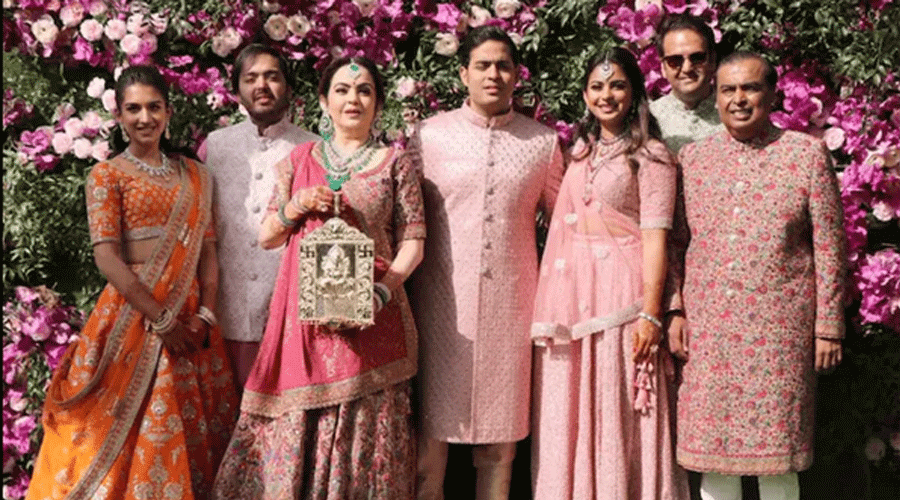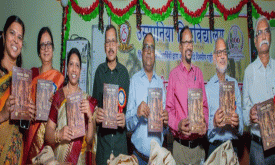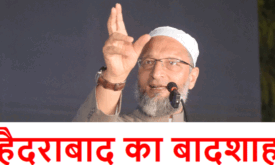Srinath Sridharan
New Delhi: In recent years, middle-class Indians, in their exuberance, have embraced a show-off culture characterised by lavish displays, whether in family weddings or even simple Diwali celebrations and regional festivals. This trend often prioritises spectacle over substance, leading to extravagant expenses that can strain financial stability.
What are the financial lessons middle-class Indians can learn from the extravagant nature of weddings ?
Great Indian weddings
Indian weddings are deeply embedded in cultural norms and traditions. But in recent times it seems to emphasise more of grandeur and opulence. These celebrations are seen as a reflection of familial pride and social status, often dictating the scale and extravagance of the event. The cultural expectation to host a wedding that showcases wealth and generosity can place immense pressure on families to spend beyond their means. This societal mandate not only influences financial decisions but also perpetuates a cycle where each family feels obligated to uphold or surpass traditional standards, sometimes at the cost of their financial well-being.
Also Read-
Indian weddings often come with a hefty price tag, sometimes running into many lakhs and crores of rupees. Indian middle class and upper middle class families often more of their net-worth on extravagant weddings, not realising the significant impact on their financial safety belt. In some cases, up to 15-20 percent of their total assets can be depleted for each child’s wedding. Many families frequently go to great lengths, even incurring debt, to ensure a wedding is celebrated in style. This behaviour, though culturally ingrained, can lead to long-term financial strain, highlighting the need for balanced financial planning.
“In the middle-class dilemma, the quest for status often clashes with the need for stability, as the pressure to impress overshadows the value of living within one’s means.”
Families frequently measure their celebrations against those of peers and relatives, fostering a competitive environment where the need to match or exceed the lavishness of others becomes a driving force. Middle-class families often experience significant stress in “keeping up with the Joneses.” This psychological pressure can lead to extravagant spending as families strive to project an image of success and prosperity. The desire to avoid perceived inadequacy and to gain social approval often results in financial overreach, with individuals incurring substantial debt or depleting savings to host a wedding that stands out.
While business families often use weddings to express gratitude to family and friends and to celebrate in style, they typically don’t suffer significant losses in net worth due to these expenses. For them, such weddings can be seen as investments, bringing together current and future business partners and stakeholders.
Newer trends
A continuous stream of social media showcasing rich weddings and lavish lifestyles should inspire the middle class to work hard and build wealth, but it shouldn’t be a blueprint for spending their comparatively lower net worth on similar extravagance. Instead, these images should serve as motivation to achieve financial goals rather than a temptation to overspend on appearances that may lead to long-term financial strain.
It is unfair to compare a HNI or UHNI family wedding and then say your kid’s family expense is only 10 per cent of your net worth. Some smart Alec Finfluencer wrote that the grandest Indian wedding is only 0.5 per cent of that family’s net-worth. It’s simply meaningless number. Wedding expenses are simple arithmetic. The richer the person, that’s the numerator. The wedding expense is the denominator. So don’t compare what someone else spent on the family wedding.
In today’s ‘living in the moment’ lifestyle, even young Indians have been enamoured with destination weddings, eagerly showcasing their wedding lifestyle—from courting and engagement to pre-wedding parties, various wedding events, and post-wedding receptions. While these celebrations create a temporary sense of joy and excitement, they come at a significant financial cost and often foster a fleeting mental high during those brief celebratory periods. However, the reality is that the ability to cultivate a lasting companionship is not determined by lavish expenses or social media likes but rather by mutual understanding, respect, and shared values that extend far beyond the grandeur of the festivities.
“Destination weddings may have the ‘wow’ factor, but lasting love is built on real connections, not just Instagram likes and elaborate photo ops.”
Wedding expenditure is no reliable indicator of happiness or the likelihood of a successful marriage. Numerous studies show that couples who spend excessively on their weddings often find themselves facing the same challenges as those who opt for modest celebrations. The focus on extravagant displays can overshadow the foundational aspects of a relationship, such as communication, mutual respect, and shared values.
In fact, many instances of bitter separations and high-profile divorces globally serve as stark reminders that the cost of a wedding does not equate to the quality of the marriage that follows. Emotional fulfillment and lasting partnerships are built on deeper connections rather than the opulence of a one-day event. Thus, prioritising financial stability and genuine relationship building over lavish spending is crucial for long-term happiness.
Lessons galore
The financial lesson is this: a wedding is just one part of life’s journey, and it’s crucial for Indians to understand how much to spend to avoid a significant drop in their overall net worth. Life is filled with uncertainties and unforeseen challenges, so it’s a mistake to assume a stable income and net worth in the future. Careful financial planning and restraint are essential to ensure long-term financial health and security.
The first lesson here is the importance of budgeting. A wedding, like any major project, requires meticulous financial planning. Establishing a clear budget helps in managing expenses and avoiding financial pitfalls. It’s crucial to differentiate between needs and wants, ensuring that the expenditure aligns with the family’s financial health.
Another critical lesson is the role of savings. Indian weddings are often planned years in advance, providing ample time to save. Regular savings can significantly ease the financial burden, reducing the reliance on loans or credit. This practice underlines the broader principle of financial discipline, emphasising the need to save consistently for future goals, whether it’s a wedding, education, or retirement.
Many people assume that because they are young, they will continue earning more than the Indian growth rate and that their investments will multiply significantly. While earnings may grow, so will expenses, lifestyle costs, and social peer pressure-related spending. Unexpected health crises and other personal emergencies, which are impossible to predict, also add financial strain.
“True wealth is not measured by the grandeur of a wedding, but by the strength of the bond that lasts long after the celebration ends.”
The concept of opportunity cost needs reiteration. A proportion of the funds allocated to a wedding could instead be invested in more productive avenues such as education, real estate, or business ventures. This trade-off is a fundamental aspect of personal finance, urging individuals to consider the long-term implications of their spending choices. While the emotional and social returns of a grand wedding are significant, it’s essential to balance these with economic realities.
(The author is a Policy Researcher & Corporate advisor. He tweets @ssmumbai)
from news9live.com




